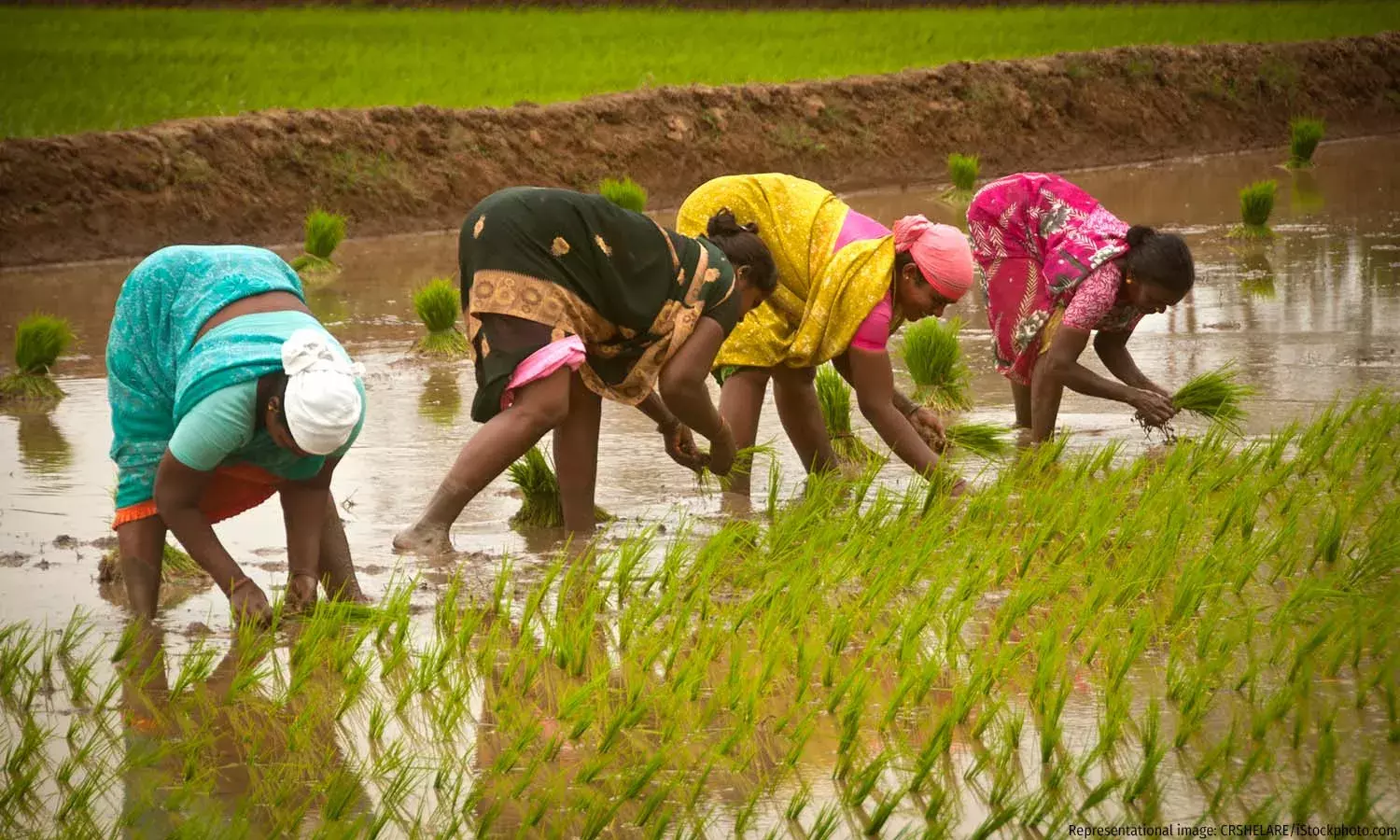More Women Are Working In Odisha’s Farms, But Earn Less Than Men
Odisha has a lower wage rate in agriculture than the national average, but even within that, women earn consistently less than men
New Delhi: Over 50% of Odisha’s rural women work in the agricultural sector. More women are now working in the state’s agriculture and allied activities, but they earn consistently less than male workers, and the wage gap is increasing, our analysis finds. Given that this is in a state which has an already low wage rate compared to the national average, women workers are overworked and underpaid in the sector.
Overall, two in five Odisha’s workers, or 55% of its rural population, are engaged in agriculture and allied activities, which contributes 26% to the state’s economy. With a growth rate of 6.3% in 2020-21, the sector grew at almost twice the all-India rate. However, keeping with the trend across the rest of India, people have moved from farming to industry and services. Even as overall agricultural wages have increased in Odisha, it still lags behind the all-India growth rate.
In six charts, we explain the state’s employment dynamics and the transformations unfolding within its economy.
How Odisha’s workers are moving away from farming
While agriculture continues to be a significant contributor to the state’s economy, its share in the Gross State Domestic Product (GSDP) of Odisha is lower compared to that of industry and services.
Before the Covid-19 pandemic, the industry sector consistently achieved the highest average growth rate, reaching 7%. In 2022-23, the industry sector is projected to maintain its growth momentum at 6.1%. The mining sector alone accounts for over 10% of the Gross State Value Added (GSVA). Similarly, the services sector has become increasingly significant, comprising nearly 36% of the GSVA in the same year.
Over the past few decades, Odisha’s economic landscape has undergone significant changes. The agriculture sector, which had once dominated the Gross State Value Added (GSVA) at 33% in 1993-94, has witnessed a decline, reaching a low of 18% in 2011-12 but recovering to 26% in 2020-21. In contrast, the industry sector peaked at 44% in 2011-12, and although it had decreased to 37% in 2020-21, it remains a vital part of the state’s economy. Similarly, the services sector has steadily expanded its contribution, reaching 37% in 2020-21, reflecting a broader economic diversification in Odisha.
In 1993-94, 72% of the rural population was employed in agriculture. But over the next few years, participation in the rural agricultural workforce declined steadily and dropped to 52% in 2020-21. This trend is indicative of a shift towards diversification of employment opportunities, as seen by the concurrent growth in other sectors. The industrial sector’s share of employment in rural areas increased from 9% in 1993-94 to 28% in 2020-21. Urban areas, on the other hand, have experienced a gradual increase in non-agricultural employment, with the largest share of workers in the services sector.
In recent years, there has been a decline in agricultural employment rates within rural Odisha. In 2019-20, about 55% of the rural population in Odisha was employed in agriculture. This figure decreased to 51% in 2021-22.
This trend is not unique to Odisha alone; rural India as a whole has seen a dip in agricultural employment rates. In 2019-20, 62% of rural workers were engaged in agriculture, and this declined to 59% in 2021-22. Overall, Odisha’s rate was lower than the all-India figures.
Odisha’s women farmers
In 2018-19, the female workforce in agriculture in Odisha stood at 43.8%, and this proportion rose to 57.2% in 2019-20, and settled at 54.2% in 2020-21. In comparison, the industry and services sectors recorded lower female participation rates in the same period, with the industry sector at 21% in 2019-20 and the services sector at 19.6% in 2020-21.
In contrast, the male labour force participation rate in Odisha’s agriculture sector has stayed within the range of 36% to 43% (with a surge during the Covid-19 pandemic), with numbers falling over the years. In parallel, the services sector has undergone expansion, with 33% of the male workforce. However, unlike female workers, there is an increasing presence of male workers in both the secondary and tertiary sectors.
Trends in agricultural wages
Agricultural wages in Odisha have been increasing over the years, but have not kept pace with the increase in other states. As of 2021-22, Odisha ranks 28th of 36 states and Union territories in terms of daily agricultural wage levels. In 2019-20, Odisha’s farm wages were 6.1% less than the national average. In two years, this gap rose to 13%.
Gender disparity in wages
Across the three-year span, both men and women workers in agriculture saw wage increases. But, men consistently earned higher wages than their female counterparts, our analysis shows. The gender wage gap in both rural Odisha and across rural India has been increasing over the last three years.
In 2019-20, the gender wage gap in rural Odisha was 34.4%. In 2020-21, the gap increased to 38.9%. Across India, the gap stayed between 36.2% and 28%.
This trend shows contradictory rural agricultural labour dynamics in both Odisha and India: an expanding female workforce but with consistently lower wages than men.
We welcome feedback. Please write to respond@indiaspend.org. We reserve the right to edit responses for language and grammar.




